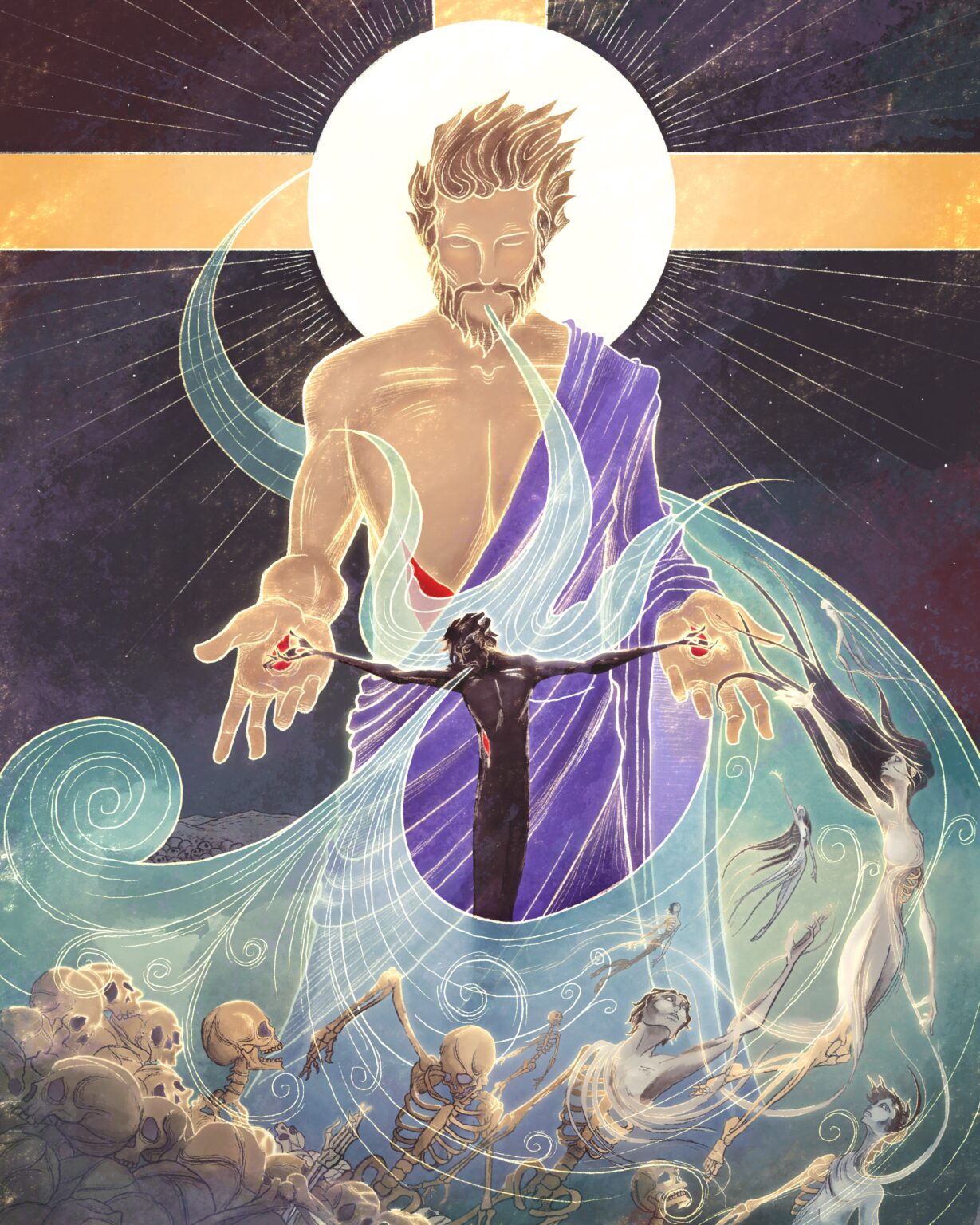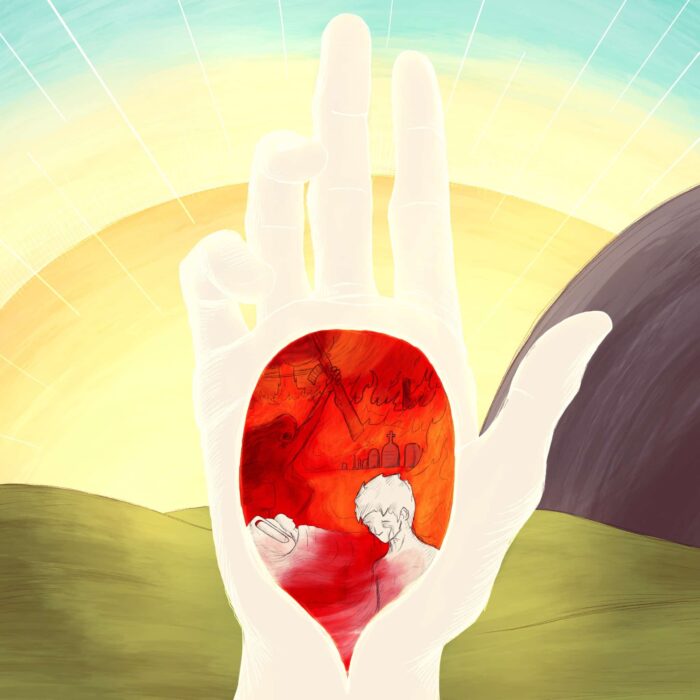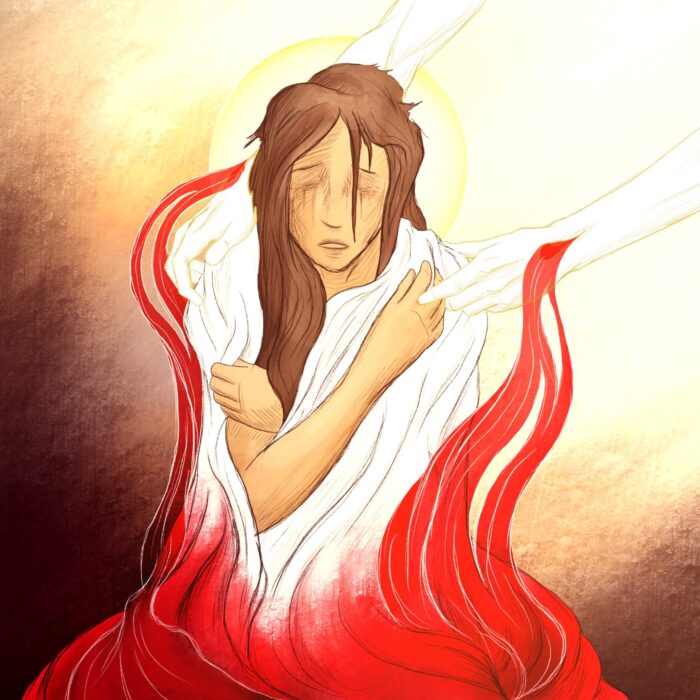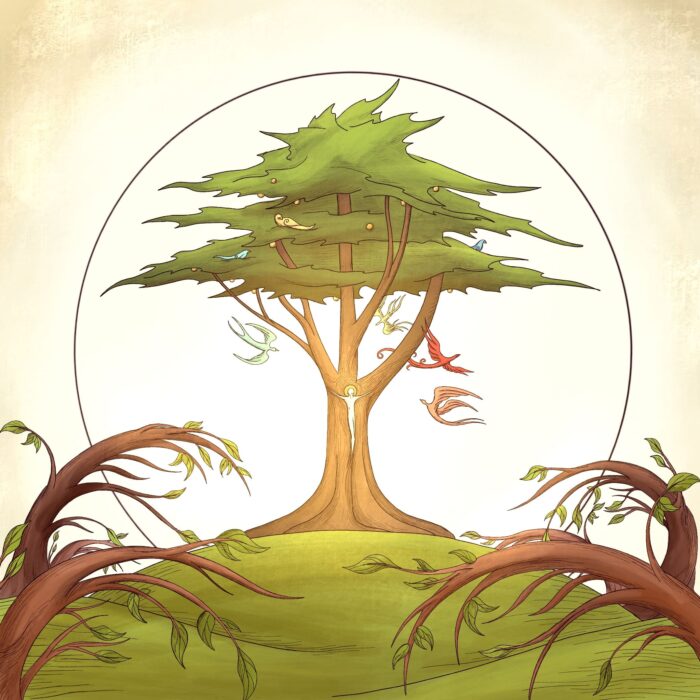Ezekiel 37:7-10, “…and the bones came together…and flesh came upon them…But there was no Breath in them….And the Breath came into them, and they lived…”
In these verses, a wilderness of dry bones is gathered together, clothed in flesh, and finally ‘breathed upon’ (ἐμφυσάω, crucially, the same word as Genes is 2:7 and John 20:22) by the Spirit. What I want to draw attention to this morning is the ‘two-stage’ nature of this resurrection (which echoes the ‘two-stage’ creation of humanity in the Garden, but that is for another time). First the bones are united and given flesh, then the Breath / Spirit comes and gives them life.
In the context of Ezekiel, the resurrection envisioned here points toward the return of the people from exile. Thus, the ‘two-stage’ nature of this visionary resurrection suggests a ‘two-stage’ return from exile: At first, the people return to the land, but they are not yet living. Like the rebuilt temple, bereft of its indwelling glory, the returned people are—spiritually speaking—still corpses. And they remain corpses until YHWH Himself breathes upon them by the breath that fills his own enfleshed lungs in the person of the incarnate Word.
This, at least, seems to be John’s reading of the vision.
Only when YHWH God rides His radiant Merkabah (cf. Ez.1) into the heart of His people’s spiritual exile and there, from the lofty heights of His chariot-throne, breathes down the Spirit upon the lifeless bodies of His Bride (Ez.47:10), pouring out the Spirit as water into her wilderness (Ez. 47:1-12)—only then do the corpse bodies of His people truly live.
And when does this happen?
In John’s Gospel, the Spirit is breathed upon (ἐμφυσάω) the disciples by the crucified Jesus who is risen in John 20:22. Now, the use of ἐμφυσάω here is critical to note. John is the only author in the NT to use this word, and it is inconceivable that he does so without knowledge of its role in the LXX in Ezekiel 37 (and Gen.2:7, but again—for another time).
For John, then, the moment of true Creation (Gen 2:7) and return from Exile (Ez.37)—which is also the true Resurrection of Israel / humanity—comes as the Slain and Risen Lord (Who is Himself True Israel, returned from exile and the True Human, newly made) breathes the breath of His risen life upon His disciples (the gathered children of God, cf. Ez.37:21-22, Jn 11:51-52, 12:32).
This moment takes place *narratively* in John 20:20, but it is displayed *iconographically* in the figure of the Pierced One (who, for John, is indivisibly the slain and risen Jesus) as He symbolically gives the Spirit both in breath (19:30) and water (19:34) to his Church from the heights of the resurrection-illumined cross.
Thus, for John, it is the crucified and risen JESUS who pours down and breathes out the Spirit and so finally raises His people from the death of their exile. In the Johannine mind, the breath that enters the bones of Ezekiel 37 is the breath that Jesus breathes down from His cross, the breath that is proleptically and symbolically the breath of the Risen Lord, the breath that fills the stale air of the tomb on Easter morning, the breath that washes over the disciples in the upper room, and the breath that falls as fire upon the nascent Church at Pentecost. This is the breath of resurrection and of new creation, the very Breath of God.




